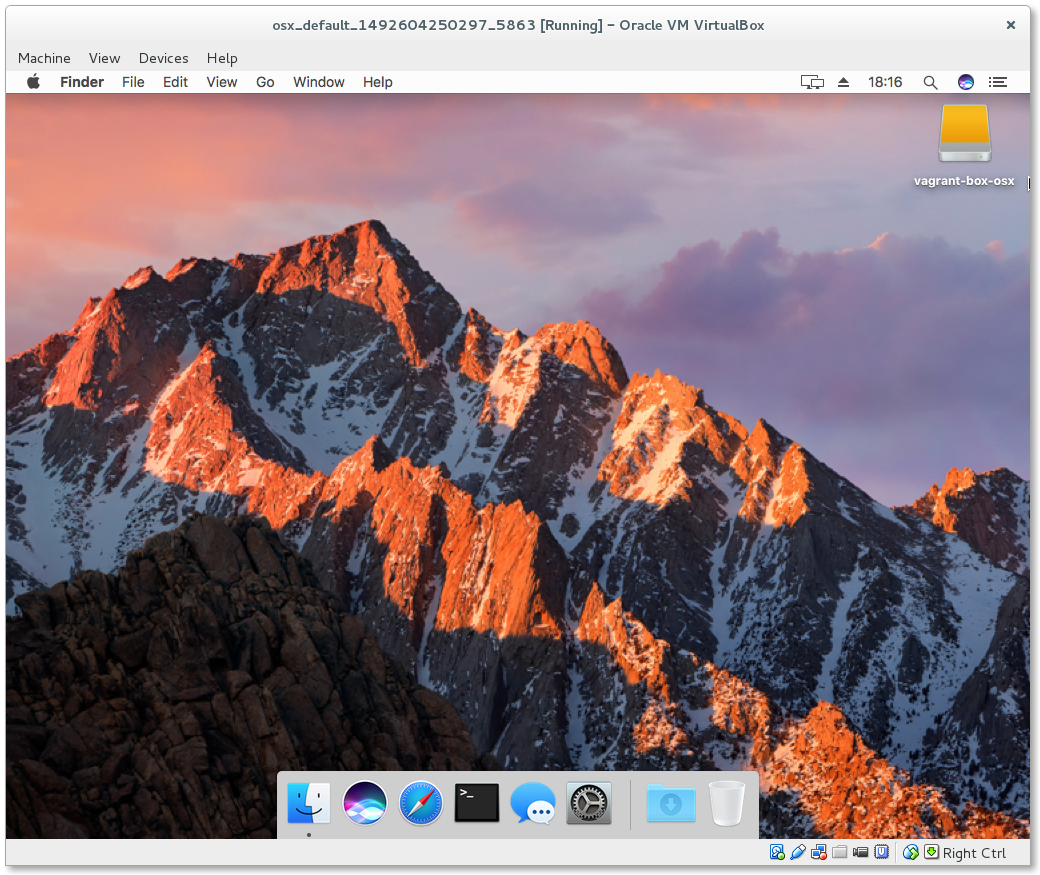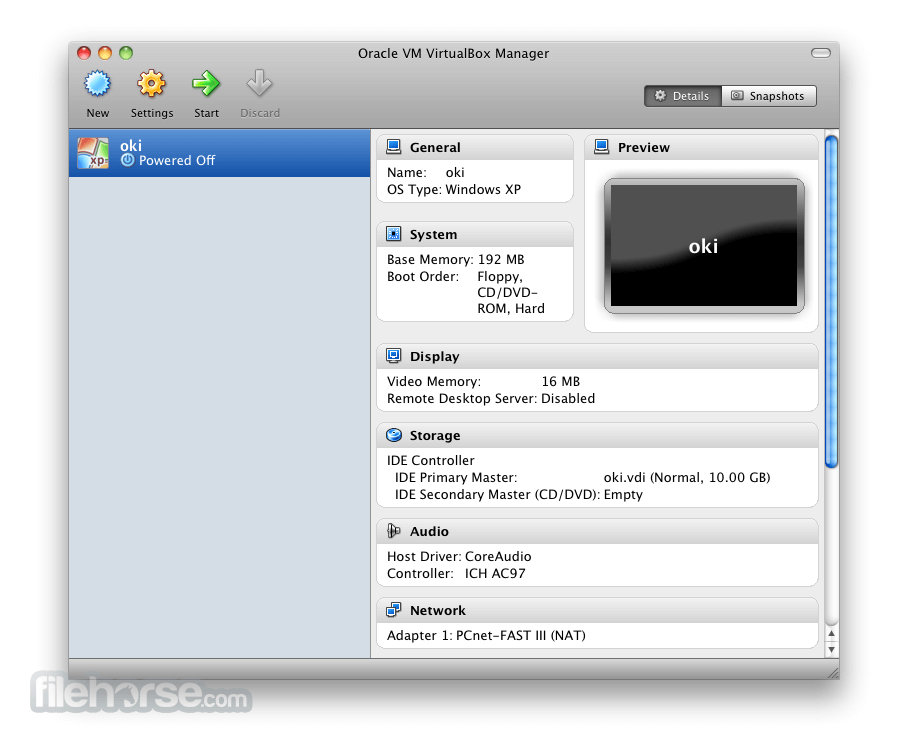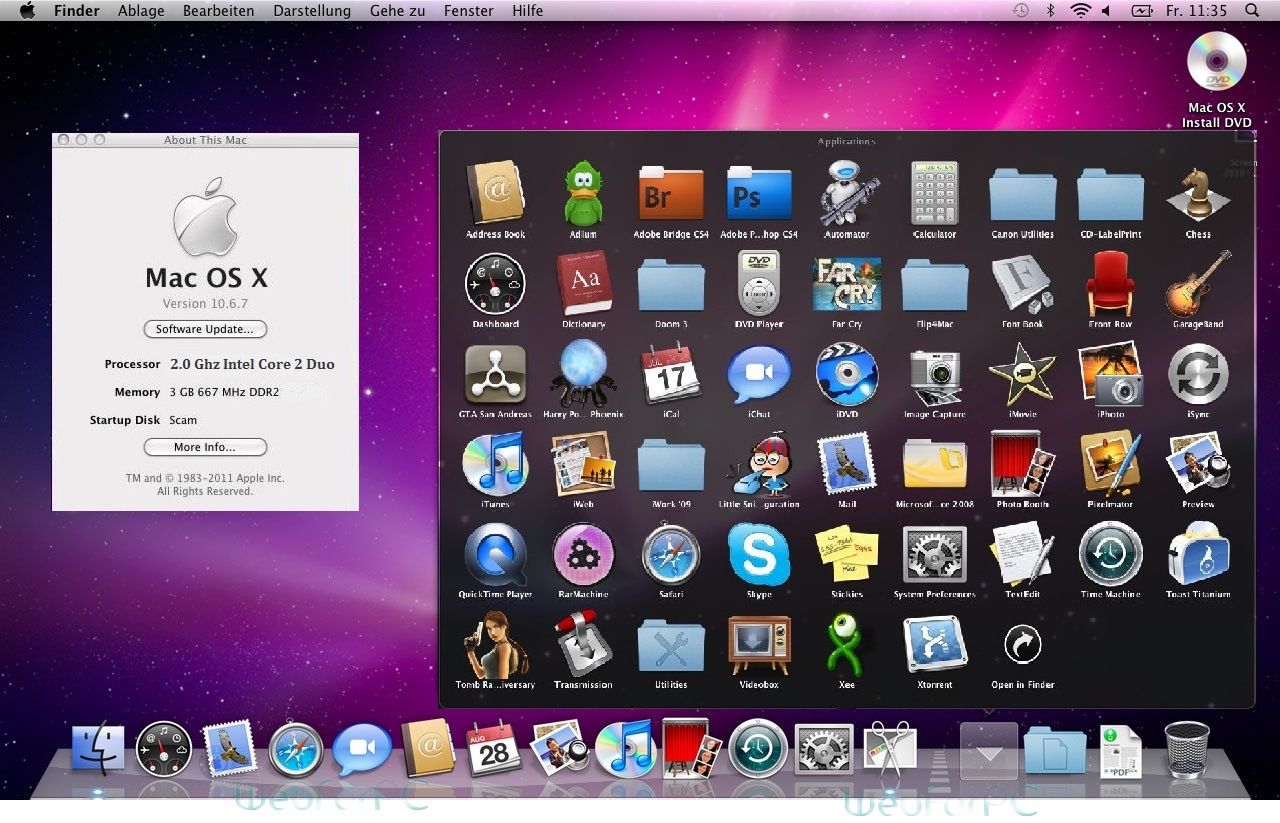

- #Recommended mac os for virtualbox how to#
- #Recommended mac os for virtualbox update#
- #Recommended mac os for virtualbox pro#
- #Recommended mac os for virtualbox software#
- #Recommended mac os for virtualbox iso#
Why does VirtualBox matter? Open source: Must-read coverage
#Recommended mac os for virtualbox how to#
#Recommended mac os for virtualbox software#
Video: Why your company should invest in open source software (TechRepublic).
#Recommended mac os for virtualbox pro#
Quick glossary: Virtualization (Tech Pro Research).There is also the Guest Additions, which expands the VirtualBox feature set to include mouse pointer integration, shared folders (between guest and host), improved video support, seamless windows, generic host/guest communication channels, time synchronization, shared clipboard, and automated logons. To make VirtualBox even more appealing, the VirtualBox Extension Pack is available, and it adds support for USB 2.0 and USB 3.0 devices, VirtualBox RDP, disk encryption, NVMe and PXE boot for Intel cards. A great place to find virtual appliances for VirtualBox is TurnKey Linux. With VDI/VMDK/VHD images, it is possible to quickly deploy a virtual appliance without having to go through the steps of installing the operating system as the guest.
#Recommended mac os for virtualbox iso#
If deploying guests from an ISO image, the guest operating system is installed in normal fashion–only as a VM. When using VirtualBox as the host platform, administrators can deploy hosts from ISO images or from VDI/VMDK/VHD images. SEE: Riding the DevOps revolution (free PDF) (TechRepublic) Thanks to the command line option, VMs can be deployed on a server with or without a GUI, making the software highly flexible. VirtualBox can be run from either a user-friendly GUI or from the command line. Each individual guest can be started, stopped, and paused from either the GUI or the command line and can function on a network as if it were running on its own hardware. The host can run as many guests as the hardware will support, while still leaving enough resources for the host to operate. In order to run macOS or Windows as a VM, you must have a licensed copy of the operating system in question.


A VirtualBox host can be run on Linux, Windows, or macOS, whereas a VirtualBox guest can consist of any Linux distribution, Solaris, macOS, BSD, IBM OS/2, or Windows. A guest is any supported operating system running as a VM. The host houses the VirtualBox software that can then deploy the guests. A single VirtualBox host can deploy as many guest VMs as the host hardware can handle. VirtualBox is a GUI and command line tool that makes it possible to deploy servers, desktops, and embedded operating systems as VMs. SEE: Virtualization policy (Tech Pro Research) On the Linux platform, VirtualBox can be found within the standard repositories, so installation can be done using your distribution’s package manager.
#Recommended mac os for virtualbox update#
We’ll update this resource periodically when news and updates about VirtualBox are released. This smart person’s guide is a quick way to get up to speed on VirtualBox.

Anyone that wants to test out new platforms, develop, or manage virtual machine (VM) servers can turn to this free, open source tool to strengthen their skills or expand their company’s services. VirtualBox has been enabling open source enthusiasts, IT admins, and tech writers to host various operating systems on a host machine for years.


 0 kommentar(er)
0 kommentar(er)
